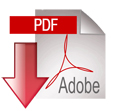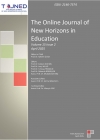TOJNED - Volume 9 - Issue 3 - July 2019
 COMMON WRITING CHALLENGES OF THE UNDERGRADUATE STUDENTS: A CASE STUDY
COMMON WRITING CHALLENGES OF THE UNDERGRADUATE STUDENTS: A CASE STUDY Alaul Alam
Abstract:
The study explores the common writing challenges of undergraduate students at tertiary level. The study was qualitative in approach. Data were collected from the composition writing of the students of first and second semester of five departments, i.e. CSE, EEE, English, Law and Business departments at a private university in Dhaka, Bangladesh. Forty students were selected and among them, twenty students were taken from the first semester and the rest twenty from the first semester. Data were also collected from the teachers’ interview along with observation and in this connection, four ELT teachers were interviewed individually. The major findings showed that the challenges in verb, capitalization, number, passive mood, the use of gerund and infinitive, sentence arrangement, article, pronoun and spelling mistakes were common in students’ writing. However, the study sought the causes of these drawbacks of the undergraduate students and explored some remedies at the end of the study.
 RESOURCE UTILIZATION AND QUALITY DELIVERY OF NOMADIC EDUCATION PROGRAMME IN NORTH CENTRAL NIGERIA FOR GLOBAL COMPETITIVENESS
RESOURCE UTILIZATION AND QUALITY DELIVERY OF NOMADIC EDUCATION PROGRAMME IN NORTH CENTRAL NIGERIA FOR GLOBAL COMPETITIVENESS MICHAEL OLAREWAJU OGUNDELE, ETEJERE PATRICIA O.A, Ogunniyi M.L
Abstract:
The study examined the relationship between resource utilization and quality delivery of nomadic education programme in plateau state Nigeria for global competitiveness. A correlational research design was adopted for the study. The population for the study are 650 respondents which comprised of the headteachers, teachers, parent-teachers, association executives and prefects. Sample of 450 respondents were selected using proportionate stratified random sampling technique. Three research questions and three hypotheses were formulated for the study. A self-designed research instrument tagged resource utilization and quality delivery questionnaire (RUQUDQ) was validated by the experts in Economic Education, Educational Management and the reliability index of 0.82 was obtained after subjecting the instruments to split half reliability method and tested at .05 using spearman ranking order statistics. Descriptive statistics like percentages, mean score and standard deviation was used to answer all the research questions whole. The hypotheses were tested with Pearson product moment correlation statistics at 0.05 significance level. It was however concluded that all the hypotheses tested were rejected which showed that low significant relationship existed between resource utilization and quality delivery indicators in nomadic education in Plateau state which affect global competitiveness of the programme in the state. It is however recommended that the local resources in nomadic education should be used during teaching-learning processes using practical and activity oriented for effective utilization of the available resource s. however, innovative approach for resource utilization in nomadic education in plateau state will definitely enhance global competitive of the programme.
 SAFETY AND SECURITY CONSIDERATIONS IN SCHOOL PLANT CONSTRUCTION IN WEST AFRICA: IMPLICATIONS FOR RESEARCH AND DEVELOPMENT
SAFETY AND SECURITY CONSIDERATIONS IN SCHOOL PLANT CONSTRUCTION IN WEST AFRICA: IMPLICATIONS FOR RESEARCH AND DEVELOPMENT Sani Dantani MANGA
Abstract:
The quality of school plant construction determines the quality and extent to which the school environment is conducive, safe and secured for effective teaching and learning. This paper examines the kind of safety and security considerations that should be paramount in the construction of school plant in West Africa. The paper underscores the need for continuous research on ways of improving the safety and security of school plant construction to meet up with the modern security challenges as well as provide a stable school environment for sustainable educational development. It considers inadequate finance and neglect of safety and security specifications as among the major challenges in construction of school plant in West Africa. The paper therefore suggests that adequate financing and strict compliance to security specifications should be viewed as strategies for ensuring safety and security in school plant construction in West Africa.
 STUDY IMPLEMENTATION BLENDED LEARNING IN STUDENTS SKILLS AND BASIC CONCEPTS IN INDONESIA 201
STUDY IMPLEMENTATION BLENDED LEARNING IN STUDENTS SKILLS AND BASIC CONCEPTS IN INDONESIA 201 Agung listiadi
Abstract:
The development of the world of technology today has experienced rapid growth and development. Along with the development of this technology, the world of education must also be developed. Many ways can be used in the world of education to benefit from information technology. Educational institutions are increasingly qualified, even an international standard. Learning by using e-learning system will make the teaching and learning process can be done asynchronously. Students can learn without having to be in the same space and time. The implementation of blended learning in schools is produce information and communication, mainly in network technology in the shape of internet, generally combined learning models that include face to face learning model, face-off learning, and on-line learning Students can also learn with the desired stages and scopes. Communication and interaction facilities in the e-learning system will also make the interaction of teachers / lecturers and students / students not only limited to the classroom but can be extended by electronic communication.
 THE POLICY OF TEACHER IN-SERVICE TRAINING (TST) IN INDONESIA
THE POLICY OF TEACHER IN-SERVICE TRAINING (TST) IN INDONESIA Abdul Madjid
Abstract:
Teachers are one key element in the education system, particularly at schools. In fact, there is growing public awareness that no teachers, no formal education. There is no qualified education without the presence of professional teachers in sufficient number. One of the ways for teachers who were already employed to gain access to new developments in education is to receive TST. This article aims to; analyze the policy of TST, identify factors influencing effectiveness of TST, and develop of model TST in Indonensia.
The study result shows that there are two paths of training and development of teaching profession in Indonesia; the first is professional training and the improvement of various teacher’s competencies; second is career training and development. The factors influencing the effectiveness of TST in Indonesia include suitability of teacher qualifications and competencies, mastery of education and teaching technologies, presentation of training program, and evaluation technique. Some things to be developed in the future to improve teacher quality in Indonesia includes high standard recruitment system, professional development by research-based, integration of technology in teacher education and professional development, and effective evaluation system.
 TODAY’S DISCUSSION BOARDS: THE GOOD, THE BAD, AND THE UGLY 219
TODAY’S DISCUSSION BOARDS: THE GOOD, THE BAD, AND THE UGLY 219 Torus Washington, Megan Bardolph, Paul Hadjipieris, Sheena Ghanbari, Jace Hargis
Abstract:
The aim of this paper was to investigate the Piazza usage trends amongst the Computer Science Engineering (CSE) department at a research-intensive university located in the southwestern part of the United States (US). Results showed that student and instructor interaction with Piazza varied from course to course with contribution data spikes correlating to important assignments or exams. Undergraduate and Graduate interaction with Piazza differed significantly with some slight overlap. Piazza use was much more prevalent amongst undergraduate CSE students. Undergraduate courses had higher average contributions per student and quicker response times. Logon patterns indicated that many students visit the page without contributing and the profile of the patterns were recognizable and consistent across graduate and undergraduate courses. It is good that Piazza provides a great outlet for interaction and problem-solving for students, but there are bad asynchronous forum factors, and unsettlingly ugly issues of student data and privacy. This investigation points to some interesting data trends and warrants further investigation into why students behave the way they do with Piazza and what impact this interaction has on their learning and well-being.
 WALKING THE WALK OR JUST ALL TALK? COLLEGE FACULTY AND STUDENTS’ PERCEPTIONS OF UNIVERSAL DESIGN FOR LEARNING IN THE CLASSROOM
WALKING THE WALK OR JUST ALL TALK? COLLEGE FACULTY AND STUDENTS’ PERCEPTIONS OF UNIVERSAL DESIGN FOR LEARNING IN THE CLASSROOM Thomasena Shaw, Nancy Van Leuven
Abstract:
Universal Design (UD) is an effective, flexible blueprint that focuses on differences as they relate to learning; because learners differ in the ways they see and understand information that is presented to them, students from various socio-economic, cultural, and learning differences need different ways of approaching content. Extant research has largely explored attitudes related to UD from a faculty or student perspective, this exploratory case study employs quantitative research methods to explore perceptions of UD among faculty and the students they teach at a mid-sized regional public university.
Using a quantitative, causal comparative framework, findings indicate student and faculty agreement with statements about the importance of UD strategies/practices is overwhelmingly higher than respondents’ agreement with statements about the implementation of those strategies/practices in their classrooms. This difference was statistically significant across all items for students; faculty perceived the gap to be a lot more narrow.
Findings highlight the challenges that still face faculty and students, and the academy. Benefits to students of expanded professional development opportunities for faculty to support the changing needs of diverse learners are identified, and practical UD applications in the college-classroom are presented.


